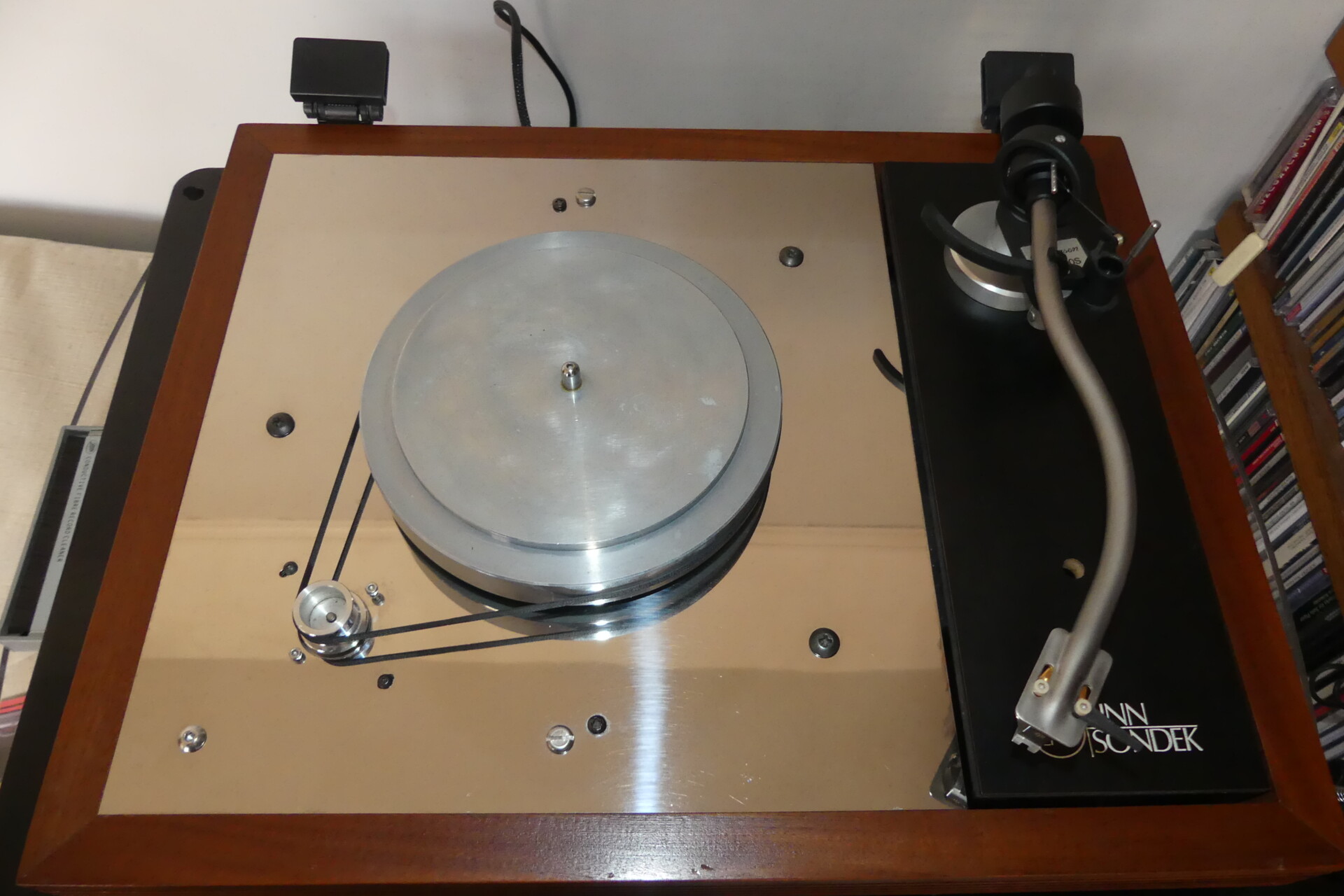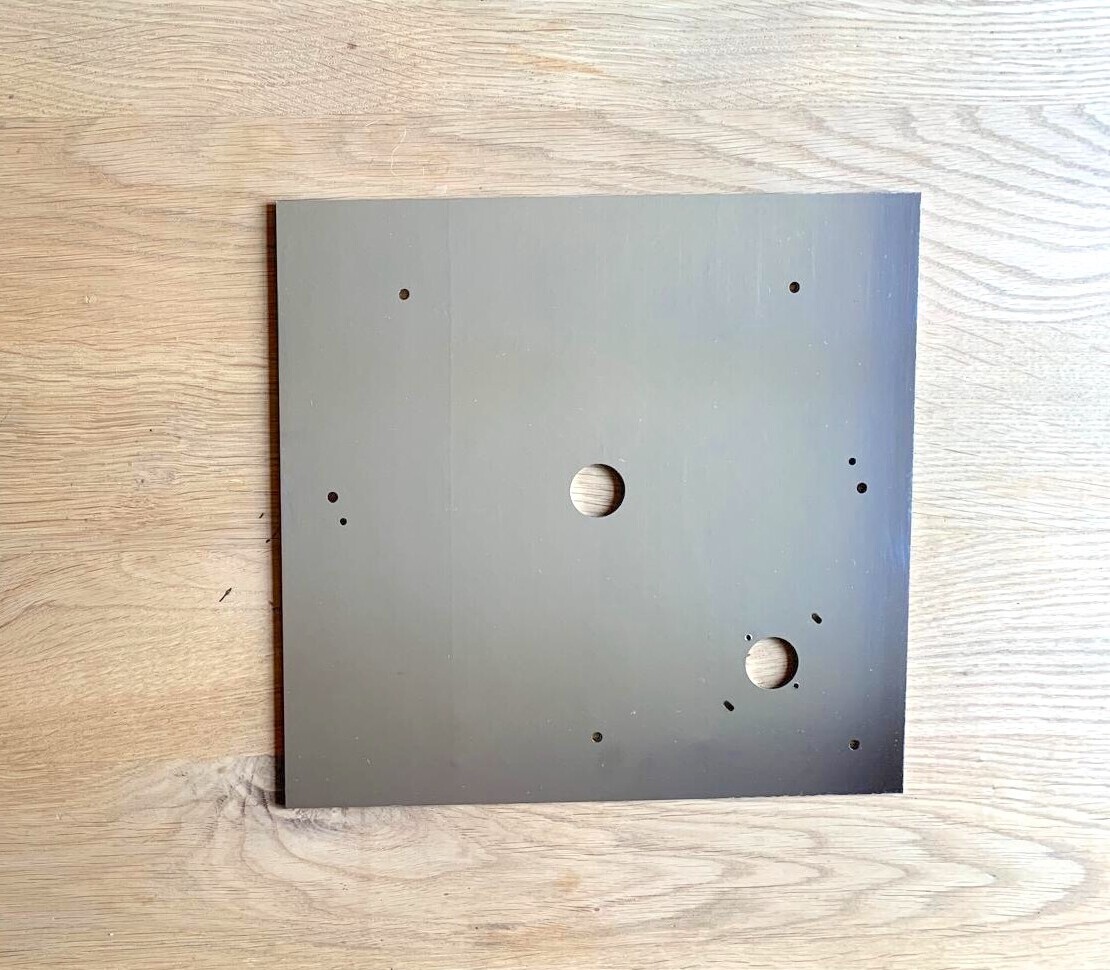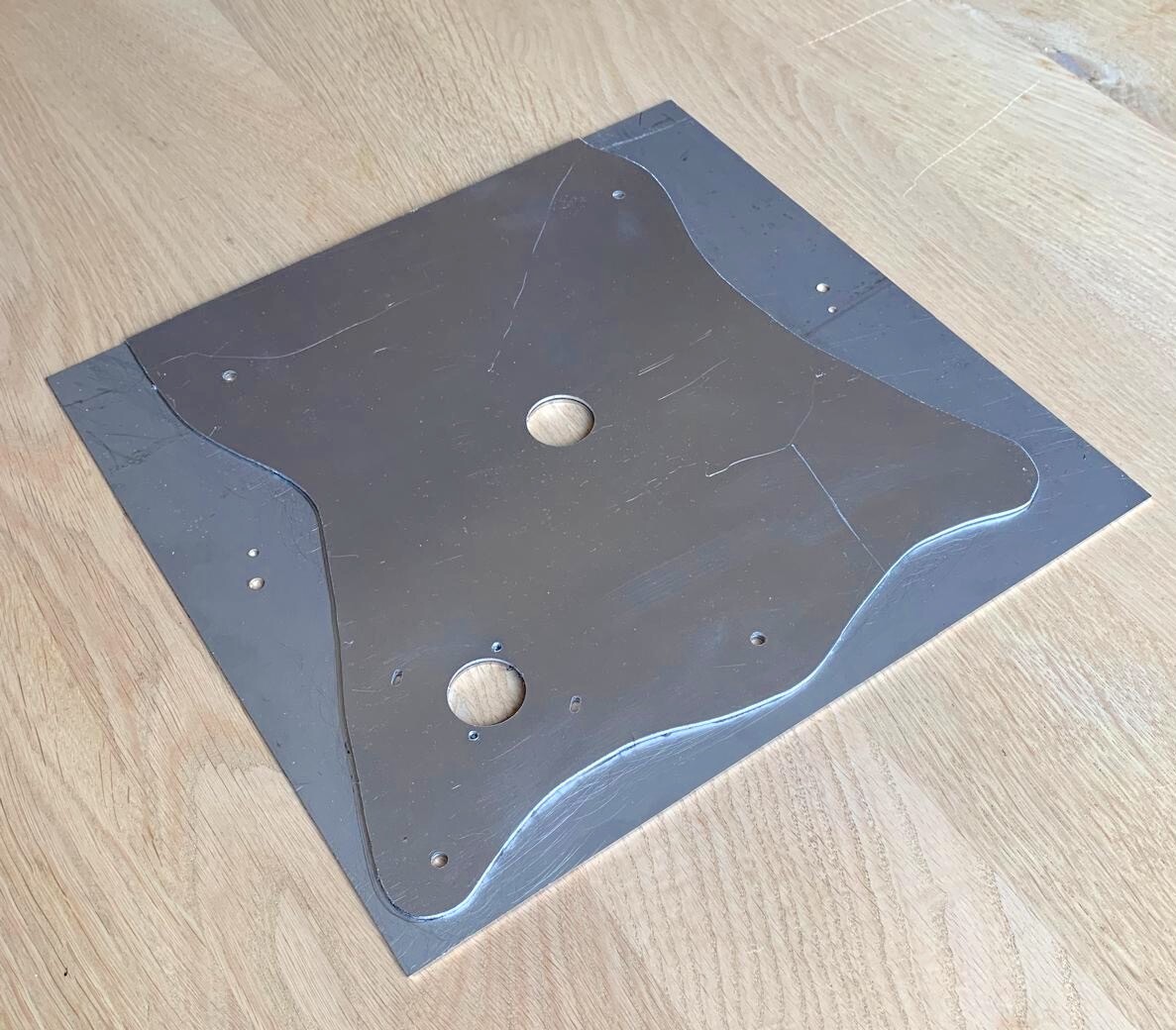The net effect of the added stiffness and the new mounting arrangement is that the top plate is now flat, with none of the original’s (intentional) front to back dip. The whole deck now feels more solid and substantial. You can rap the top plate with the stylus sat on a record, and there’s minimal noise transmitted through the system. Steve also claims thatdecks using his top-plate are more stable in terms of set-up, with barely any tendency to go off-tune – a perennial LP12 bugbear. Once the suspension has been set-up, it should stay set-up. That subtle bend or dip in the original LP12 top-plates acted as an aid to stability. By splaying the three mounting springs slightly, it created a subtle ‘self-centring’ tendency. The downside was that the degree of bend was not engineered-in, generally being tweaked by the deck’s builder, while the spring angles, and the seating of their mountings during assembly would vary from deck to deck, so consistency was largely down to your set-up guy. No wonder so many LP12s went off tune and it was so hard to achieve that nice bounce. A flatter, stiffer, more securely mounted top plate should keep the springs vertical with a better chance of preserving their setup. Mine does get moved around quite a lot, as review products make competing demands on shelf space; that always used to be a huge ‘no-no’ for any right-thinking LP12 owner and was generally considered a good way to undermine that carefully arrived at pistonic bounce. I’ve suffered no such problems so far, which certainly seems to support the claims for more stable and consistent, long-term set-up.
One result of relocating the motor is that there’s no room for the traditional on/off switch, so this needs to be relocated elsewhere, generally into a freestanding enclosure for the control(s) and power supply. In my case, the deck is already switched via the external agency of the Naim Armageddon and I don’t see this presenting too great an issue and the assumption certainly seems to be that any user going to the trouble of replacing the deck’s top-plate will either acquire or already be using an external supply. One question that is still being ironed out is what happens with the likes of the Lingo, where the deck still uses the top-plate switch despite the external supply, but all things are possible – including an externally mounted switch.

So, to summarise, what we have here is a stiffer, sandwich construction, constrained-layer damped top plate, with a more secure method of mounting, and a relocated motor. These are not insignificant changes, so as discussed, I wanted to separate them from the sub-chassis and arm-board modifications. As it turns out, these not insignificant changes have had a not insignificant (and entirely positive) effect on performance. Of course, that’s what you hope for, “expect” possibly being too strong a term where LP12 mods are concerned. But it’s gratifying to see the changes moving – and moving so far – in exactly the desired direction.



